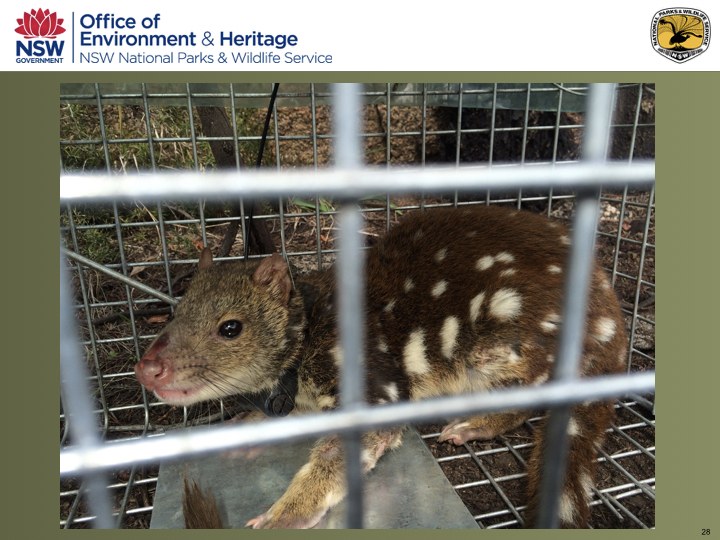
Quolls & other Monaro arboreal mammals
Our mini forum on 20 April was both informative and gave some degree of optimism. Andrew Claridge presented us with his findings on quolls and some other mammals.
At the forum, Andrew Claridge (NSW National Parks & Wildlife Service) presented us with his findings on quolls, actually spotted-tail quolls, on the Monaro. The smaller eastern quoll is extinct in these parts but that might change with a captive breeding program now being conducted at Mulligans Flat.
Andrew has been surveying quolls on private land to increase understanding of their population, distribution and behaviour. Dietary studies of the red fox and feral cat reveal almost complete overlap with that of the spotted-tailed quoll. Hence, in sites where foxes and cats are numerous it may be difficult for quolls to obtain food resources. Threat abatement plans should therefore aim to reduce the impact of foxes at priority sites around Australia. However, as yet for cats, no effective control strategies that can be applied at landscape-scale. Ten-eighty poison can be used effectively against foxes, but has almost no impact on native fauna, apart from dingoes.
Study methods for quolls include trapping, scat analysis (both location and content), sand traps, satellite collars, hair traps and sensor cameras. Together they are producing an picture of quoll behaviour. Andrew showed many pictures of magnificent animals, their habitats, latrine behaviour, images of their meanderings (if carrying a collar) and various graphs.
Spotted-tailed quolls were once plentiful. Andrew showed an image of a quoll cloth to demonstrate the point. However, settlers decided to hunt them, thus greatly reducing their number - disease was also likely a factor. However, his research and that of others provides some optimism that at least on the Monaro numbers are slowing growing. This appear not to be the case in Victoria. He estimated that there were about 500 animals in the Monaro. This was not an inconsiderable number given the quoll is a top order predator. It seems to hold its own against cats and foxes as, while it cannot beat up a fox, it has the ability to climb trees giving it access to food not available to foxes and a place to escape from fox attack. His talk also briefly touched other marsupials such as koalas and gliders.
Thankyou Andrew for your presentation and ongoing support.




